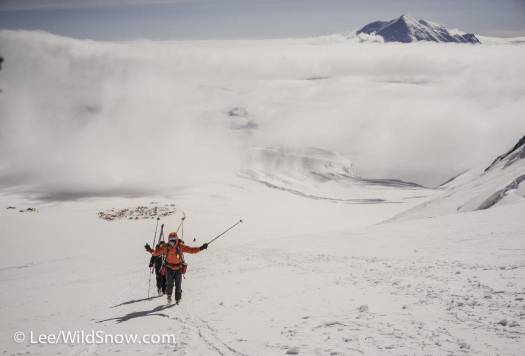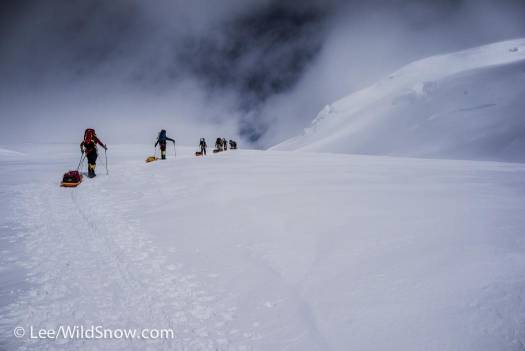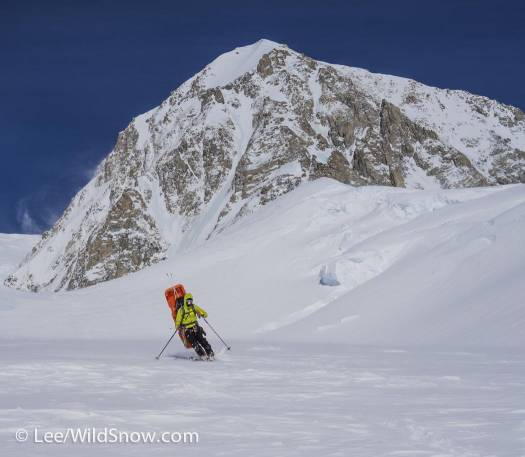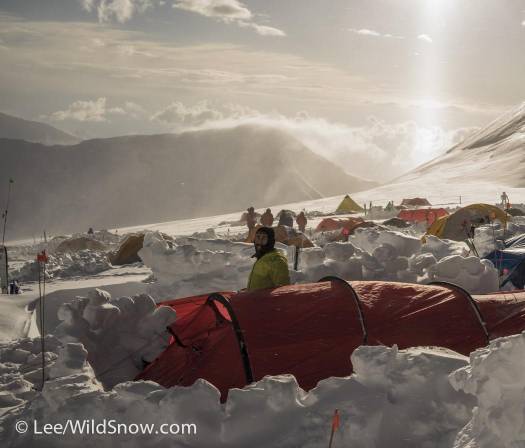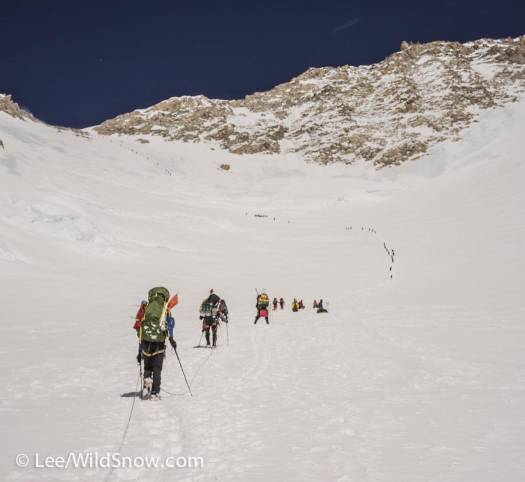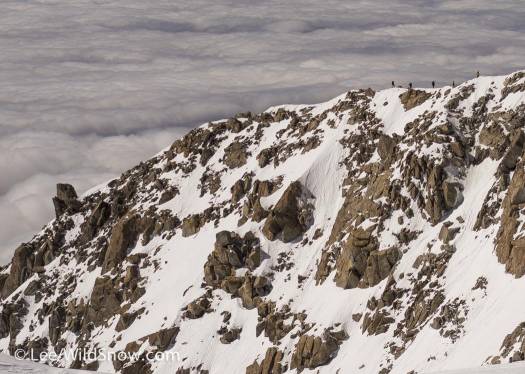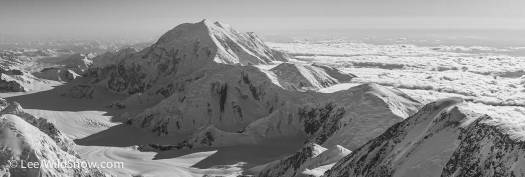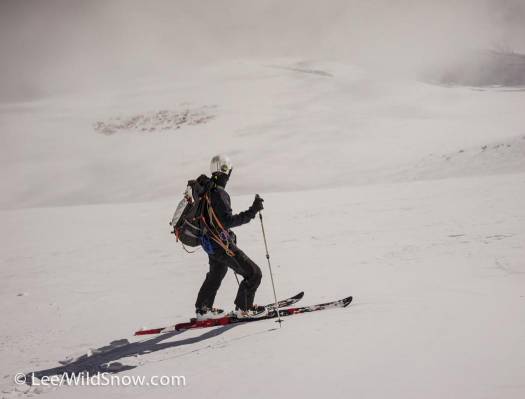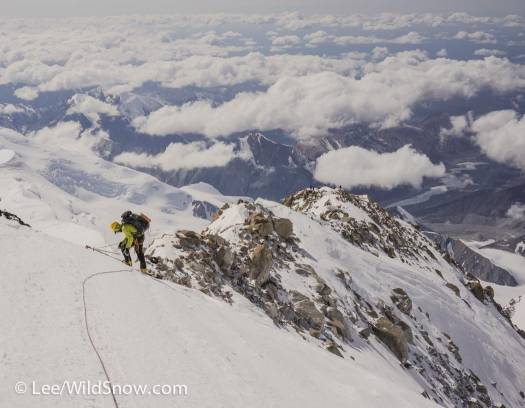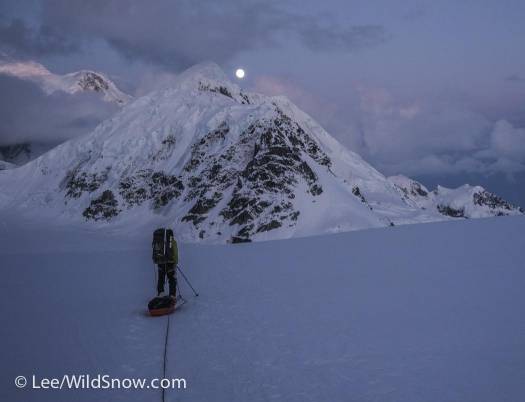I have been motivated by mountains for nearly as long as I have been motivated by ice cream.
When I was probably five or six years old I went to Mount Monadnock in southern New Hampshire with my family. I didn’t want to be carried and I didn’t want to walk, so I sat down and complained. Out of some combination of exhaustion, frustration, and clarity my dad turned to me and said, “You know, there is an ice cream shop on the summit.”
He bought me ice cream as soon as we were down, and ever since then mountains have felt like home.
For 18 days in May, Denali was home.
Denali, or Mount McKinley as the United States government insists on calling it, sits at 63 degrees North Latitude in the Central Alaska Range. The tallest mountain in North America, what makes Denali truly impressive is its prominence over nearby neighbors. Only Mount Foraker and Mount Hunter top 14,000ft and most other mountains in the range, while gigantic, are comparatively short.
The South Peak of the mountain stands at 20,320ft high. A Denali trip has been on my list for a while, and this year it came together. After many expedition ideas, my friend John Brueck and I decided to get after the West Butt experience. Our plan was to try for the summit via the standard route and have fun skiing where possible.
Flying into Kahiltna Base camp is nothing short of awesome. The lush riparian outpost of Talkeetna quickly turns into a wall of alpine extreme. After one weather day in town, we flew in on May 16th, sharing a plane ride on a K2 Aviation Otter with an RMI expedition of 9. We landed mid-day, soaking in the sun along with the dominating presence of Mount Francis, Mount Lisa, and Mount Hunter.
One of the Park Service volunteers greeting our arrival introduced himself soon after our de-planed, “Oh you guys worked up on the north side of the Park, I’m Ken Karstens.”
Ken’s ancestor Harry Karstens, apart from being Denali National Park’s first superintendent, was also a member of the 1913 Stuck expedition, Denali’s first ascent party.
This sort of interaction demonstrates the human dimension of a West Buttress trip. The people on the mountain were one of the most rewarding parts of the experience (though, as I will discuss in a bit, also the most terrifying).
We camped at 7,800 our first couple of nights on the mountain. The lower section of the route consists of fairly easy skiing on a big Alaskan glacier. The crevasses were in good shape for us and everything went smoothly. Skiing down from 11 to 7800 after caching was our first bit of skiing, and really fun in the conditions. Foraker, Crosson, and the Kahiltna Dome provide a top-notch view, though empty sleds act quite a bit like a sail, making for an interesting challenge.
Below 11,000 feet the route makes a bend to the north beneath Kahiltna Pass, the Peters Glacier and tundra flatlands stretching out beyond. This weakness in the Central Alaska divide provides a corridor for migrating songbirds seeking out the bugs and berries of the Alaskan interior. Thrushes from the lower 48 states, wheatears from Africa, and warblers from South America migrate from across the globe.
They do not all make it. The most bizarre sighting of the trip was not down-suit-clad climbers, sweat-drenched and gasping for relief in the midday furnace, but dead songbirds rolling like tumbleweeds down the Kahiltna, undoubtedly caught in unfavorable winds and trapped in a world of ice only miles from their Eden to the north.
Above 11,000 is when you really feel like you are on the mountain. Lower down it is easy to wonder why you are passing such amazing peaks headed uphill towards an unseen objective.
Above 11,000 feet is also where the junk show begins. Moving up above camp we happened to be catching the first good weather window in a week, and the floodgates were open, our first experience in the ever-stressful, human side of Denali travel. There is no technical climbing here, but a heavily crevassed section of the route just past Windy Corner is somewhat notorious. While heading up towards this section groups were backing up well down the trail, parties were crossing ropes, and the word on the street was that people were falling in holes.
“Careful guys, someone just fell in a crevasse past the corner,” one descending mountain guide said as he headed down past us.
“Hey guys, another person fell in a crack,” we were told again shortly after.
And again, “Watch out up there, a fourth person just fell in a hole.”
By the time we wrapped around Windy Corner it seemed as though lemming syndrome was epidemic.
We ignored the wanded route, heading high in search of safe passage. Everyone was fine, but it was worrisome to see people head for obvious crevasses and poor snow bridges simply because a track and wands led that way.
Other people were definitely the scariest part of travel on Denali for me. This was exemplified a few days later when another team unclipped our rope from a picket and replaced it with their own at 16,500 ft. I was stunned.
While I hope this doesn’t sound too much like a complaint there were a few things that I feel should be much more open in the West Butt culture:
We ended up taking the strategy that waking up early to avoid the crowds, or being willing to book it super fast around any traffic jams was well worth the effort. That being said, people also proved to be an amazing asset on the mountain, especially during the next leg of our journey at 14,000.
We arrived at 14k on our sixth day and we were stuck at 14 for nine days. High winds, snow, and poor visibility prevented a move up the mountain.
While at 14, I had a blast hanging out with camp neighbors, getting to chat with people from around the world, running into a few old friends, getting welcomed into others’ tents, sharing information, food, and strategies with those around us.
The RMI group we flew in with were super welcoming and friendly letting us hang out in their kitchen tent (Pete, Robbie, Josh and the RMI-ers, thank you), my friend Katie, acclimating for the Cassin Ridge, traded me Reese’s Pieces for Jolly Ranchers, other skiers at 14 were quick to team up and tour together, and most people were very supportive of one another. Many thanks to Yes We Xan, DeGnarly, TTFunTime, The Denali Girls, and all the teams that helped provide conversation, motivation, and inspiration.
I had arrived at camp with particular stoke and excitement to ski. We had some amazing tours and turns in the short windows of good weather our first few days at 14, but the wind scoured slopes, blue ice, and loaded slabs turned this stoke into serious hesitation.
Skiing on the upper mountain is scary.
We woke up our third day at camp and debated between trying to ski Rescue Gully, which we turned back from the day before due to weather, and checking out the fixed lines. We opted to head for the lines, more out of curiosity than any real worry about the skiing. Nearing the 16 ridge above the lines, we heard someone shout “Avalanche!” and looked back to see three skiers booting up to Rescue disappear in a collage of snow only to reemerge at the final moments of the slide’s descent. They took a thousand foot ride in a D2+ avalanche and were lucky to be alive.
Denali can have a mid-winter snowpack all year long. Large wind events sweep across the upper mountain frequently. The hamlet of 14 camp makes complacency easy.
We stashed skis at 14 for our summit push. While skiing off the upper mountain can help one scoop up style points and bragging rights, conditions are a fickle reality. Leaving skis also justified the second pair of boots we hauled along. It’s not worth forcing a ski descent anywhere, let alone Denali. When the weather broke, climbing conditions were great, but the skiing was just not in shape.
This was a blessing in disguise. In the mountain community the West Butt is well known, Denali gets acclaim, but rarely have a I heard praise for the route itself. The route is awesome.
From 16k to 17k the buttress provides a diving board in the sky with amazing views and exposure. Above 17k, an easy but beautiful snow climb rolling above the Harper Glacier leads the climber to the summit ridge, an aesthetic and exposed ramp at the top of the continent.
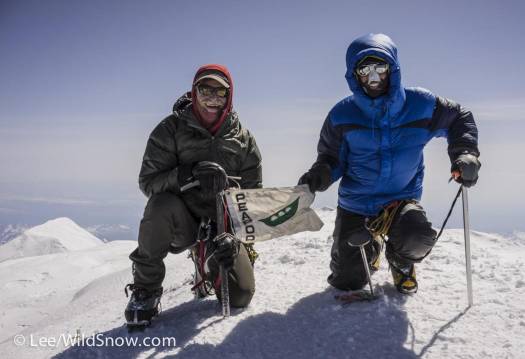
Team Peapod shot on top, me in green and John in blue…Like the ‘Pequod’ of Moby Dick, the ‘Peapod’ was a boat at home in the waters of New England (though not until the late 1980s). The Peapod flag first journeyed to the leviathan summit of Denali carried by my dad 25 years ago.
After a perfect summit day we headed back to 17 for the night then back to base camp the following day in a long push. We took breaks at each camp and weren’t on the lower glacier until the middle of the night. This is definitely the safer strategy for moving through more crevassed terrain, but was also an amazingly beautiful and peaceful ski.
Passing Mount Francis and skinning back up Heartbreak Hill under a full moon was one of my favorite pushes of the whole trip. The shorter mountains of the range regained their impressive stature. The world of ice engulfed us again. The satisfaction of a great trip allowed for quiet contemplation of the many future possible objectives on the growing horizon.
All in all Denali is a true adventure. The climbing was easier than I had expected, but the conditions and expedition quality were full on. The weather, the altitude, the people, the route, and the location all make the mountain one of a kind. Be patient with the place, wait for good weather, leave camp early, bring lots of Snickers bars, and have respect for the mountain.
Also, there is an ice cream shop on the summit.
(WildSnow.com Guest Blogger, Alex Lee, lives in Leadville, Colorado in the winter and Denali, Alaska in the summer. He is currently working towards a Ph.D. in the ethics of conservation at the University of Colorado. He works part-time as a naturalist in Alaska and as a ski guide and photographer in the Colorado Rockies. Like his pictures? Check out more at his website, MountainDinosaur.com.)
Dr. Alex Lee lives in Anchorage, Alaska. Alex is a professor at Alaska Pacific University, teaching philosophy and environmental studies. He also works as a sometimes guide, naturalist, writer, and photographer.

